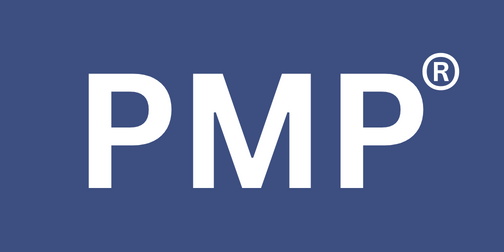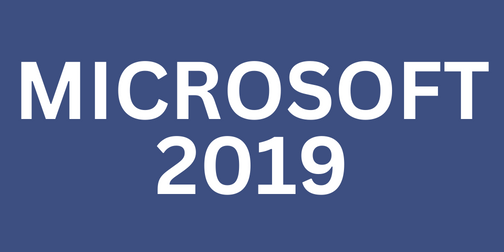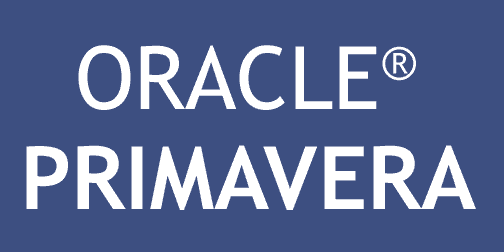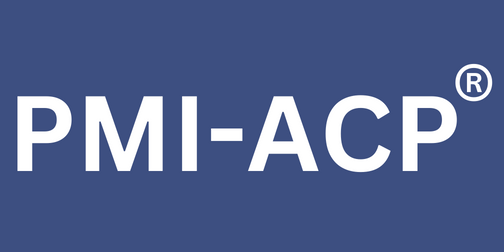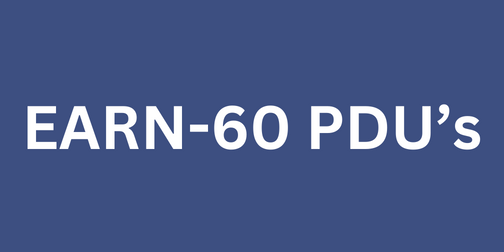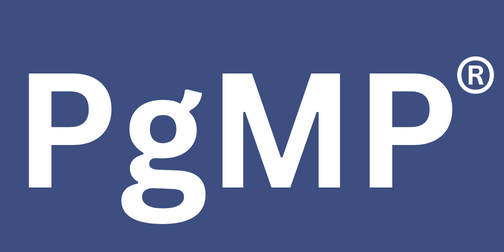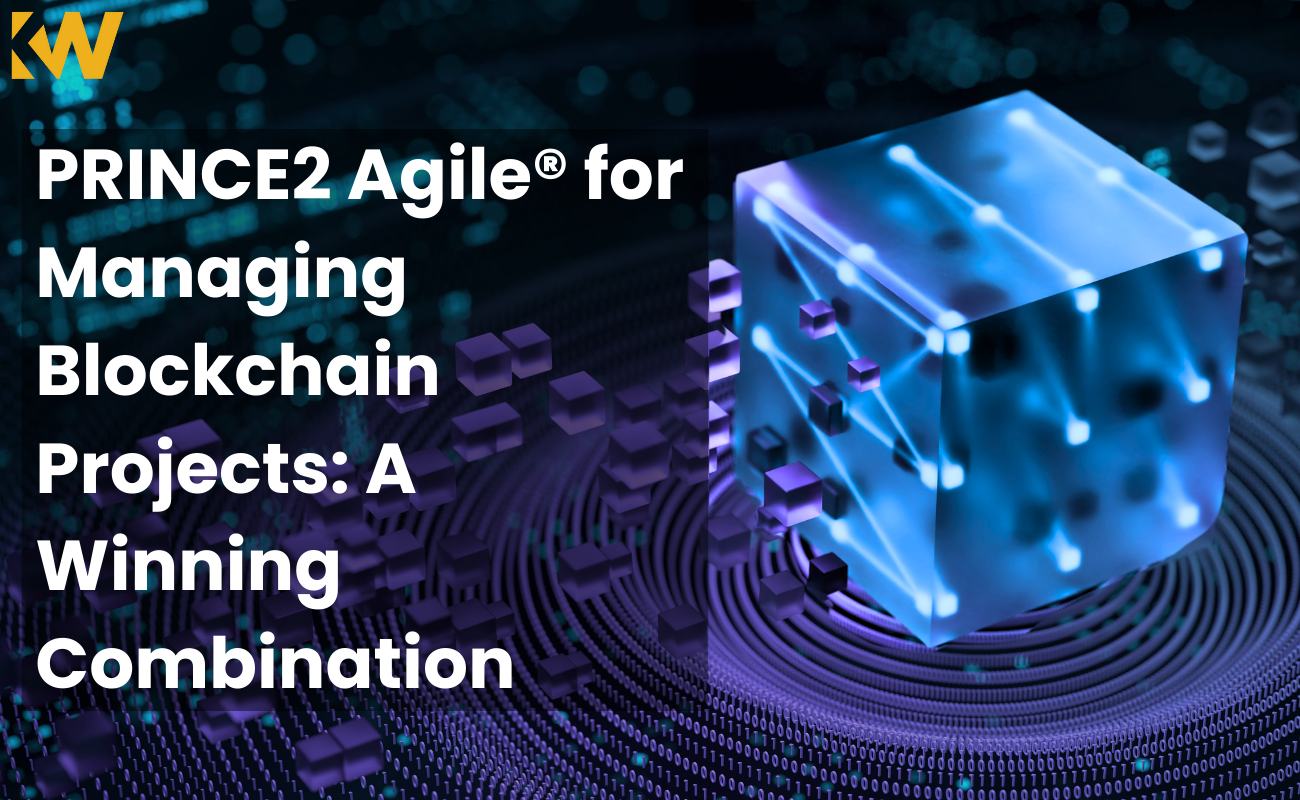
PRINCE2 Agile® for Managing Blockchain Projects: A Winning Combination
Posted On May 2, 2024 - 16:31 PM
Blockchain technology has generated widespread excitement worldwide, revolutionising secure financial transactions and streamlining complex supply chains. Yet, with such explosive growth comes a significant challenge: successfully managing blockchain projects. Traditional project management methodologies may struggle to keep up with the dynamic and iterative development process.
PRINCE2 and Agile methodologies come into the picture here. PRINCE2, with its structured planning and risk management practices, provides a solid base. Agile frameworks such as Scrum or Kanban thrive on flexibility and continuous improvement - so why not combine both approaches into one hybrid solution?
PRINCE2 Agile®, a hybrid approach, fills this void by drawing upon PRINCE2's well-defined framework and risk management practices while integrating Agile's flexible, iterative development principles. This powerful combination offers excellent potential in successfully managing blockchain projects.
Are You a Project Manager, Blockchain Developer or Just Curios About This Innovative Tech? This blog post is your roadmap! We will cover the unique challenges associated with managing blockchain projects and the limitations of traditional methodologies before showing how PRINCE2 Agile® can enable successful project outcomes. By the time it ends, you'll have acquired invaluable insights and resources that can help navigate this ever-evolving field of blockchain project management.
A Structured Approach to Project Management
PRINCE2 (Projects IN Controlled Environments) is an internationally acclaimed project management methodology emphasising organisation and control. It operates on seven core principles that guide successful project execution. These principles ensure clear project justification, such as demonstrated need and defined benefits for any given initiative.
PRINCE2 advocates a staged approach, breaking the project lifecycle into manageable phases with defined deliverables and checkpoints to enable continuous monitoring and course correction as necessary. Furthermore, PRINCE2 emphasises clearly defined roles and responsibilities so all parties understand how they contribute to its success.
Structured planning is at the core of PRINCE2, with its emphasis on creating an in-depth project plan that spans timelines, budgets, and resource allocation. PRINCE2 also emphasises robust risk management practices that identify and mitigate potential challenges before they derail a project; finally, quality control processes ensure deliverables meet established standards.
PRINCE2 provides a rigorous project management environment; however, its strength in planning can sometimes prove inflexible when dealing with faster-paced and iterative projects like blockchain projects that frequently evolve their requirements rapidly. PRINCE2's rigid stages may need to allow more room to respond quickly when adapting to to rapidly changing requirements - an aspect often missing from traditional project management methods like PRINCE2.
What is Agile Project Management?
Agile project management offers an alternative to PRINCE2's rigid structure, emphasising flexibility, collaboration, and constant improvement. Agile methodologies prioritise adapting to changing needs while creating an atmosphere conducive to continuous learning.
Scrum and Kanban, two widely popular Agile frameworks, embody these core values. Scrum utilises short iterations called sprints, in which teams focus on prioritising tasks (user stories) to deliver working software at the end of each sprint. This approach allows for continual feedback and adaptation throughout the project lifecycle.
Kanban employs a visual workflow management system. Tasks are represented as cards on a board and progress from "To Do," "In Progress", and "Done," facilitating continuous workflow with an emphasis on prioritisation and visibility of progress.
Scrum and Kanban methodologies rely heavily on user stories as their foundation, with these concise summaries outlining features or functions from the perspective of end-users. By emphasising user stories, Agile methodologies ensure projects align with user needs and prioritise accordingly.
Agile's primary advantage is its flexibility to adapt to changing requirements. In contrast to PRINCE2, which uses predefined stages for project progression, Agile allows for course corrections and prioritisation changes as projects unfold, making it ideal for blockchain development projects where requirements may change over time.
Traditional Methods: A Mismatch for Blockchain's Dynamism
Though traditional methodologies like PRINCE2 offer a solid basis for project management, their rigidity sometimes needs to be improved in the fast-paced world of blockchain. Here's why:
Traditionalism Can Stifle Innovation: Traditional methodologies may stifle innovation by emphasising predetermined plans and processes, leaving little room for exploring new ideas or adapting to emerging technologies, two essential aspects of blockchain development.
Adaptability Issues: Blockchain's dynamic nature renders traditional planning cycles ineffective for meeting its dynamic nature. New functionalities emerge rapidly, and regulation changes require adaptable project management approaches that facilitate swift course correction and prioritisation adjustments; unfortunately, traditional methodologies struggle to accommodate this agility with their predetermined stages and lengthy planning phases.
Bridging the Gap: Introducing PRINCE2 Agile®
PRINCE2 Agile®, a potent hybrid approach to blockchain development, fills an essential niche by combining the strengths of PRINCE2 and Agile frameworks to achieve their purpose.
PRINCE2 Agile® builds upon the structured planning and governance provided by PRINCE2, creating an organised project framework with clearly outlined roles and responsibilities to ensure justification, risk mitigation plans, and quality control processes are in place from day one.
PRINCE2 Agile® leverages the agility and iterative development principles associated with Agile frameworks to accommodate varying requirements, ongoing feedback loops and user story prioritisation - essential for managing projects in today's ever-evolving blockchain landscape.
PRINCE2 Agile® offers project managers a powerful solution for successfully navigating the complexities of blockchain development while assuring successful project completion.
The Benefits of PRINCE2 Agile® for Blockchain Projects
PRINCE2 Agile® offers an appealing solution for managing blockchain projects by combining the strengths of both PRINCE2 and Agile methodologies. Here's how it empowers project managers to achieve successful outcomes:
Structured Planning and Governance:
Clear Framework and Defined Roles: PRINCE2 Agile® offers a well-organized project framework with clearly outlined stages, deliverables and checkpoints, ensuring everyone understands their roles and responsibilities and contributes towards smooth project execution.
Project Justification and Risk Management: This methodology places great emphasis on clear project justification to ensure resources are allocated towards projects with tangible benefits, while integrated risk management practices from PRINCE2 offer robust risk mitigation practices and allow proactive identification and mitigation of any obstacles or hurdles which might derail the project.
Quality Control Processes: From the outset, defined quality control processes are established to ensure deliverables meet pre-set standards. These processes help minimise errors and rework, leading to a more efficient and cost-effective development process.
Flexibility & Adaptability:
Iterative Development: PRINCE2 Agile® employs agile principles for iterative development cycles. Project functionalities are broken into smaller chunks for continuous development, testing, and feedback - providing an iterative approach that encourages adaptability based on user feedback and changing requirements.
Continuous Feedback Loops: Collaborative Agile practices allow for constant feedback loops. User stories are reviewed and prioritised according to changing needs, ensuring the project remains true to stakeholder requirements while generating tangible business value.
Improve Stakeholder Engagement:
Regular Communication & Collaboration: PRINCE2 Agile® encourages open dialogue and cooperation among project stakeholders during every step of a project's lifespan. This includes progress reports and clear documentation that keep all parties involved informed and invested in the project's success.
Transparency Enhancers: Project documentation and progress reporting ensure transparency by providing stakeholders with clear insight into progress and challenges and timely feedback on projects.
Reduce Risks & Enhance Quality:
Combined Risk Management Power: PRINCE2 Agile® is a hybrid risk management framework that combines the proactive practices of PRINCE2 with the iterative testing and improvement cycles of Agile. This allows early identification of risks during development sprints and swift mitigation strategies, significantly decreasing major project disruptions.
Continuous Improvement & Quality Focus: Agile's iterative nature fosters a culture of continuous improvement through frequent testing and feedback cycles, which help detect bugs early and lead to higher-quality deliverables and an enhanced final product.
Utilising these combined benefits, PRINCE2 Agile® equips project managers with an invaluable toolkit for managing blockchain development projects. It offers structure and governance while offering the the flexibility and adaptability necessary to thrive in today's blockchain landscape.
Conclusion
Blockchain technology presents immense promise, yet managing these projects efficiently presents unique challenges. Traditional methodologies may struggle to adapt to the dynamic nature of blockchain development - this is why PRINCE2 Agile® emerges as a game-changer.
PRINCE2 Agile® equips project managers with the flexibility and adaptability of Agile principles, making PRINCE2 Agile® an ideal framework to manage blockchain development successfully while ensuring successful project delivery. It promotes structured planning, fosters ongoing communication and collaboration, and supports continuous improvement - all essential aspects for project managers navigating an ever-evolving blockchain landscape.
Are you ready to unlock the potential of PRINCE2 Agile® for your blockchain projects? Explore Knowledgewood's comprehensive training programs, designed to equip you and your team with all of the skills required for success in this ever-evolving field.
Do you have experience managing blockchain projects? Have you explored hybrid methodologies like PRINCE2 Agile®? Share your thoughts and ask any questions in the comments section below!












